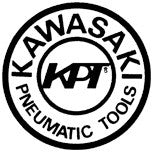How to Choose the Right Paint Brush
A high quality right paint brush can benefit all painters, home-owners and professionals, by providing a smooth clean finish with less brush strokes. They work great for oil or latex paints, as well as stains and
shellacs. These
paint brushes can be used for both
interior or exterior projects.
With the different sizes and the different angles, you will be able to achieve favourable results by using the right paint brush for the project you are attempting. A high quality like paint brush benefits all painters by providing a beautiful finish with little effort.
There are different types of paint brushes:
1. WALL BRUSH: A flat Wall Paint Brush has a thicker, shorter beaver tail handle, with longer bristles. It is used to apply paint to large areas. Be sure to choose the right size brush for the area to be covered with paint.

2. FLAT SASH BRUSH: A Flat Sash Paint Brush has a narrow, long, thin handle with trimmed bristles. The thin handle on a sash paint brush makes it easy to turn and control. Some painters use a flat sash brush for painting trim work.

3. SPECIALTY BRUSHES: A Specialty Paint Brush comes in many different sizes and shapes. These brushes can be used in many countless ways, and for many different applications. They're used for hobbies & craft projects, or for all your wallpaper projects, such as applying wallpaper adhesive to decorative wallpaper borders.


 MATCH THE RIGHT PAINT BRUSH TO YOUR PROJECT:
MATCH THE RIGHT PAINT BRUSH TO YOUR PROJECT:
- 1" to 1 1/2" Angle or flat paint brush is used for narrow spaces, tight corners, very detailed areas, wallpaper repair, hobbies & crafts.

- 2" to 2 1/2" Flat Paint Brush is used for painting baseboards, cabinets, cupboards, furniture, stairs, railings, shutters, gutters, hobby & craft projects, and many wallpaper projects.

- 3" to 4" Flat paint brush is used for painting exterior trim, exterior siding, masonry, decks, fences, walls, ceilings, and doors. This is also a good size for dusting woodwork after sanding, and before painting.

A good painter always goes around the project room and sands any scratches, dents, etc., to ensure a smooth surface before beginning to paint as well as patching any holes resulting from hanged pictures no longer there or any other dents, or wall imperfections that need to be addressed long before one picks up the paint brush to paint.

 2. FLAT SASH BRUSH: A Flat Sash Paint Brush has a narrow, long, thin handle with trimmed bristles. The thin handle on a sash paint brush makes it easy to turn and control. Some painters use a flat sash brush for painting trim work.
2. FLAT SASH BRUSH: A Flat Sash Paint Brush has a narrow, long, thin handle with trimmed bristles. The thin handle on a sash paint brush makes it easy to turn and control. Some painters use a flat sash brush for painting trim work.
 3. SPECIALTY BRUSHES: A Specialty Paint Brush comes in many different sizes and shapes. These brushes can be used in many countless ways, and for many different applications. They're used for hobbies & craft projects, or for all your wallpaper projects, such as applying wallpaper adhesive to decorative wallpaper borders.
3. SPECIALTY BRUSHES: A Specialty Paint Brush comes in many different sizes and shapes. These brushes can be used in many countless ways, and for many different applications. They're used for hobbies & craft projects, or for all your wallpaper projects, such as applying wallpaper adhesive to decorative wallpaper borders.


 MATCH THE RIGHT PAINT BRUSH TO YOUR PROJECT:
MATCH THE RIGHT PAINT BRUSH TO YOUR PROJECT:



















Comments